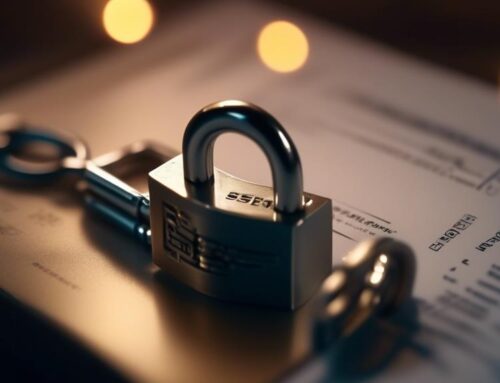Did you know that around 88% of data entry errors are caused by human mistakes? Ensuring accuracy in form data entry is crucial for businesses and organizations to maintain the integrity of their data. It not only saves time and resources but also prevents potential errors that can have serious consequences. So, how can you minimize these errors and ensure accurate data entry? In this discussion, we will explore some effective strategies to help you achieve just that. From understanding accuracy requirements to implementing data validation and error checking software, we will guide you through the steps to ensure the accuracy of your form data entry.
Understand Accuracy Requirements
To ensure accurate data entry, it is crucial for you to thoroughly understand the specific requirements for accuracy. By understanding the data requirements, you can effectively improve data accuracy and avoid costly errors.
First and foremost, take the time to carefully read and comprehend the instructions provided for the data entry task. Pay close attention to any specific formatting requirements or guidelines. This will help you understand how the data should be entered and ensure that you meet the necessary criteria.
Additionally, make sure you understand the purpose of the data being entered. Knowing the context and intended use of the data will enable you to accurately interpret and input the information.
Another important aspect to consider is the level of detail required. Some data entry tasks may require you to enter information at a granular level, while others may only require broader categories. Understanding the level of detail needed will help you avoid overcomplicating or oversimplifying the data.
Lastly, familiarize yourself with any data validation rules or quality checks that need to be applied. This will help you identify and correct any inaccuracies before submitting the data.
Train Staff on Accuracy
To ensure accuracy in form data entry, it is crucial to train your staff effectively. Implementing various training techniques can help them understand the importance of accuracy and develop the necessary skills. Consider providing hands-on training, conducting regular assessments, and offering feedback to ensure that your staff is well-equipped to enter data accurately and efficiently.
Staff Training Techniques
Train your staff on accuracy to ensure thoroughness, attention to detail, and precision in form data entry. When it comes to improving efficiency and evaluating performance, staff training techniques play a crucial role. Start by conducting regular training sessions to educate your staff on the importance of accuracy in form data entry. Provide them with clear instructions and guidelines on how to accurately input data into forms. Encourage them to double-check their work and emphasize the significance of paying attention to every detail. Implement practical exercises and simulations to give your staff hands-on experience and help them develop their skills. Additionally, provide constructive feedback and offer refresher courses to address any areas that need improvement. By investing in staff training, you are ensuring that your team has the necessary skills and knowledge to maintain accuracy in form data entry.
Ensuring Data Entry Accuracy
Ensuring data entry accuracy requires a focus on thoroughness, attention to detail, and precision in training your staff. To maintain accuracy, it is crucial to implement data entry best practices and quality control measures. Start by providing comprehensive training to your staff, ensuring they understand the importance of accuracy and the potential impact of errors. Teach them how to double-check their work, validate data, and use tools such as spell-check and auto-fill to minimize mistakes. Emphasize the need for precision and attention to detail during the training process. Encourage staff to ask questions and seek clarification whenever needed. Regularly review and update training materials to keep up with changing requirements and technologies. By investing in proper training, you can ensure that your staff is well-equipped to handle data entry accurately and efficiently.
Implement Data Validation
Implementing data validation ensures accuracy in form data entry by verifying the correctness and integrity of the entered information. Data entry techniques play a crucial role in ensuring that accurate data is entered into forms. However, even with the best techniques, errors can still occur. That’s where data validation comes in. It provides an additional layer of security by validating the data entered against predefined rules and criteria.
There are various data verification methods that can be used to implement data validation. One common method is to use regular expressions to check the format of the entered data. For example, if a form requires a phone number, a regular expression can be used to ensure that the entered value matches the expected format. Another method is to use range checks, which verify that the entered data falls within a specified range. This can be useful when dealing with numerical data, such as age or income.
Data validation also involves checking for data consistency and completeness. For example, if a form requires a user to enter their email address twice for verification, data validation can compare the two entries to ensure that they match. Similarly, data validation can check for missing or incomplete information, prompting the user to provide the necessary details.
Use Error Checking Software
Now it’s time to explore the benefits of using error checking software for ensuring accuracy in form data entry. With automated data validation, the software can quickly identify and flag any errors or inconsistencies in the entered data. This real-time error detection allows for immediate correction, reducing the chances of inaccurate information being submitted. Additionally, error checking software often offers customizable validation rules, allowing you to tailor the checks to the specific requirements of your forms.
Automated Data Validation
Consider utilizing error checking software to automate the validation of data entered into forms, ensuring accuracy and reducing the risk of human error. This automated error prevention technique is crucial in maintaining data integrity measures. By implementing error checking software, you can significantly improve the accuracy of the data entered into your forms. Here are three key benefits of using error checking software:
- Increased Efficiency: Error checking software automates the process of validating data, saving time and effort. It can quickly identify and flag any errors or inconsistencies in the entered data, allowing you to address them promptly.
- Enhanced Accuracy: Human error is inevitable, but error checking software can significantly reduce the risk of such errors. It performs thorough checks and validations, ensuring that the entered data meets the required criteria and is accurate.
- Improved Data Integrity: By automating the data validation process, error checking software helps maintain the integrity of your data. It prevents incorrect or incomplete data from being entered into your forms, ensuring that your records remain reliable and trustworthy.
Incorporating error checking software into your form data entry process is a proactive approach that guarantees accuracy and minimizes the chances of errors.
Real-Time Error Detection
To ensure real-time error detection, utilize error checking software, which actively scans and validates data entered into forms, maintaining accuracy and preventing potential mistakes. This software plays a crucial role in ensuring the integrity of the data being entered. It continuously monitors the input fields, flagging any errors or inconsistencies as they occur, allowing for immediate intervention and correction. Real-time error detection helps prevent the occurrence of errors in the first place, reducing the need for manual error correction and minimizing the risk of data inaccuracies. By automating the error checking process, this software eliminates the possibility of oversight or human error, ensuring thoroughness and accuracy. It provides a reliable and efficient solution for real-time error prevention and automated error correction, safeguarding the integrity of your form data.
Customizable Validation Rules
When utilizing error checking software for real-time error detection, you can further enhance the accuracy of form data entry through the implementation of customizable validation rules. These data validation techniques serve as effective error prevention strategies, ensuring that only valid and accurate information is entered into the form. Here are three key benefits of using customizable validation rules:
- Improved data accuracy: By setting specific rules for data validation, you can prevent the entry of incorrect or incomplete information. For example, you can require a specific format for phone numbers or email addresses, ensuring that they are entered correctly.
- Error prevention: Customizable validation rules allow you to catch and prevent potential errors in real-time. This helps to minimize data entry mistakes and reduces the need for manual data correction, saving time and resources.
- Consistency and standardization: By enforcing validation rules, you can ensure consistent and standardized data entry across all forms. This eliminates variations in data formats and improves data quality, making it easier to analyze and process the information accurately.
Monitor Accuracy Rates
You can ensure accuracy in form data entry by regularly monitoring the rates of accuracy. Monitoring accuracy rates is crucial to improving efficiency and measuring performance. By tracking the accuracy of data entry, you can identify any recurring errors or issues that need to be addressed. This allows you to take proactive steps to prevent future mistakes and improve the overall quality of data entry.
To monitor accuracy rates effectively, you need to establish a system for tracking and documenting errors. This can involve creating spreadsheets or using specialized software to record the details of each error, such as the type of error, the person responsible, and the time it occurred. By documenting this information, you can analyze patterns and trends over time to identify areas that require improvement.
Regularly reviewing accuracy rates can also help you identify training needs. If you notice that certain individuals or teams consistently have lower accuracy rates, it may indicate a need for additional training or support. By addressing these training needs, you can enhance the skills and knowledge of your staff, resulting in improved accuracy rates.
Identify Sources of Errors
Identifying the sources of errors is crucial for ensuring accuracy in form data entry. By understanding where mistakes commonly occur, you can implement error prevention techniques and minimize the risk of inaccuracies. Here are three common sources of errors to be aware of:
- Human error: Mistakes made by data entry operators are one of the most prevalent sources of errors. This can include typos, incorrect keystrokes, or entering data into the wrong fields. To mitigate this, it’s important to provide thorough training to data entry personnel, emphasizing the importance of accuracy and attention to detail.
- Incomplete or inconsistent data: When form fields are not filled out completely or consistently, it can lead to errors during data entry. For example, missing information or variations in formatting can cause discrepancies. Implementing data validation rules and using drop-down menus or predefined options can help ensure consistency and completeness of data.
- System or software issues: Technical glitches or software errors can also contribute to data entry errors. It’s important to regularly update and maintain the data entry system to minimize the risk of these issues. Additionally, conducting regular checks and audits can help identify and resolve any system-related errors.
Frequently Asked Questions
How Can I Measure the Accuracy Rates in Form Data Entry?
To measure accuracy rates in form data entry, you can compare the entered data with the original source. This will help identify any discrepancies and improve data entry efficiency.
What Are Some Common Sources of Errors in Form Data Entry?
Common causes of errors in form data entry include typos, incorrect formatting, and lack of attention to detail. These errors can have a significant impact on the accuracy of data and require thoroughness in their assessment.
Are There Any Specific Software Tools or Technologies Recommended for Error Checking in Form Data Entry?
To ensure accuracy in form data entry, use software tools and error checking technologies. These tools can help you catch and correct mistakes, ensuring that the data entered is accurate and reliable.
How Often Should Accuracy Rates Be Monitored and Evaluated?
You should monitor and evaluate accuracy rates frequently to ensure precision. By regularly assessing accuracy, you can identify any potential errors or inconsistencies in form data entry and take corrective measures promptly. This helps maintain data integrity and enhances overall efficiency.
Are There Any Specific Training Methods or Techniques That Have Been Found to Be Effective in Improving Accuracy in Form Data Entry?
To improve accuracy in form data entry, specific techniques such as double-checking, using validation rules, and providing clear instructions have been found effective. Training and supervision play a crucial role in ensuring accurate data entry.




